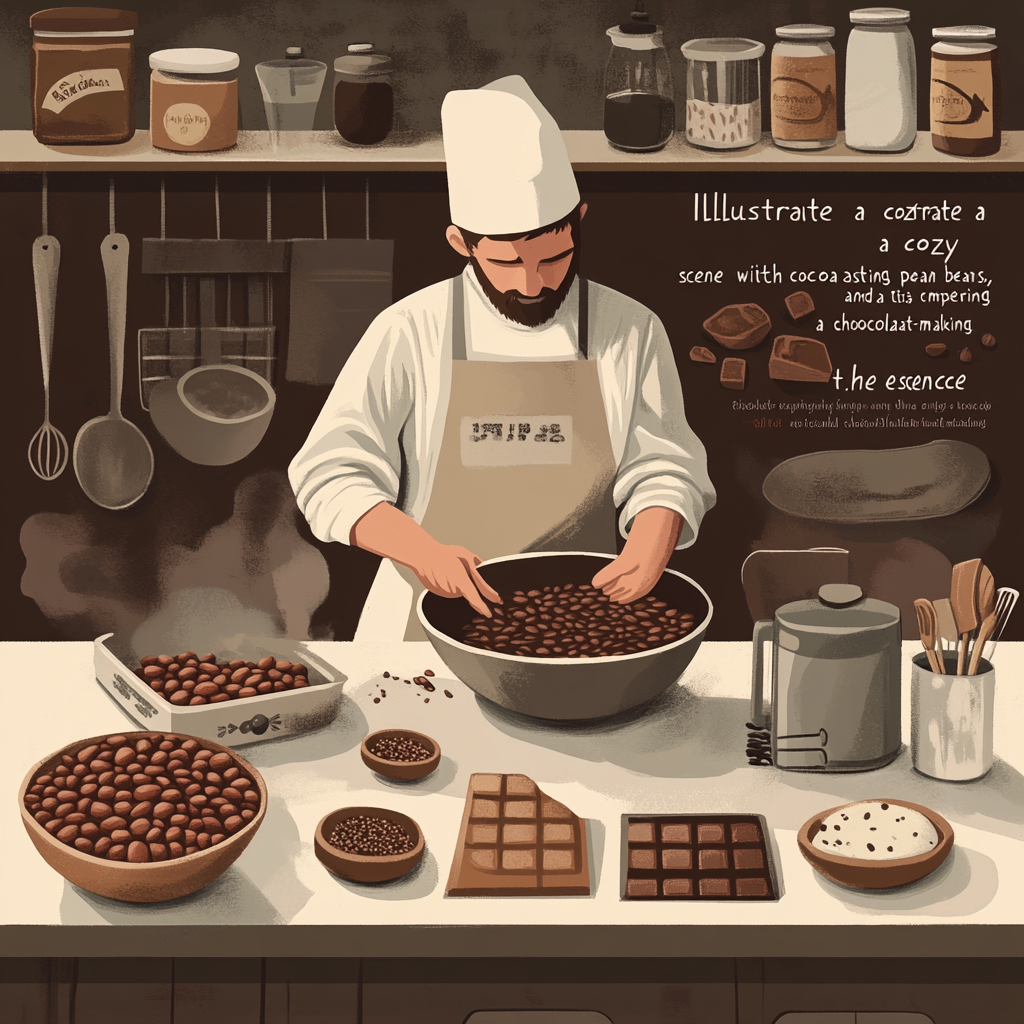
“Trump’s Potential Impact on NASA’s Future”
The Art of Making Chocolate: A Sweet Journey
If you're looking to whip up something truly delicious, nothing quite compares to making your own chocolate. You need two essential things: a) high-quality cocoa and b) the know-how to turn that cocoa into a divine treat.
Let's be clear right off the bat: don’t waste your time on mass-produced chocolates. You know the ones—those pretty boxes filled with factory-made confections that taste like they were assembled in a lab by robots on a budget. Real chocolate is a labor of love, my friends. But fear not; you don’t need to attend an elite chocolatier school to learn the craft.
First things first, gather your ingredients. Seek out fine cocoa beans, preferably organic and sourced from single-origin producers. This is not just for pretentious bragging rights; the flavor profiles vary drastically based on the region. Do you want fruity notes from some Peruvian beans, or rich, nutty flavors from Ecuador? Trust me, this choice matters. You’re not just making chocolate; you’re crafting an experience.
Next, you must decide on your method. You have a couple of paths to choose from—bean-to-bar or melting down chocolate. The former is a time-consuming but rewarding journey, while the latter is more accessible and won't demand too much from your patience or sanity.
If you're going the bean-to-bar route, get ready for a bit of elbow grease. First, roast the beans to bring out those heavenly flavors. This is a delicate process that requires you to watch them like a hawk. A few minutes too long, and you’ll end up with burnt offerings that are anything but divine. A few minutes too short, and you’ll be left with raw beans that taste like dirt and sadness.
Once just right, crack those beans open and winnow away the shells to get to the nibs inside. This part is crucial because you don’t want any pesky shells ruining your chocolate. Trust me, biting into chocolate that crunches isn’t exactly the dream experience you’re looking for.
Then comes the fun part: grinding the nibs into a smooth paste known as chocolate liquor. Yes, it sounds fancy, but it’s just a mash-up of cocoa butter and solids. You can use a mortar and pestle if you're feeling particularly earthy, or a food processor for a more modern touch. The trick is to get it as smooth as possible; no one wants gritty chocolate unless you’re trying to make some weird, avant-garde dessert.
But let’s not forget the sugar! Bring it in and mix it well. The general rule of thumb is to stay around 20-30% sugar, but you can adjust based on how sweet you crave your creations. Just know this: your chocolate isn’t going to magically become a confectionery delight if you toss in a pound of sugar.
Keep in mind that adding vanilla or a pinch of salt can elevate your chocolate game to celestial heights. Dive into the world of flavorings, and you’ll realize that chocolate can be as basic or as complex as you want. Experiment with spices, herbs, or even chili for that thrilling kick.
Pour the luscious mixture into molds and let it set. You can choose traditional molds for bars or get funky with creative shapes. Just remember, you’re making chocolate, not a modern art installation.
Now comes the final step—tempering. This is where the magic happens. You need to heat and cool your chocolate to stabilize the cocoa butter crystals. This not only helps in achieving that lovely sheen but also ensures your chocolate has that satisfying snap when broken. A balanced soul will tell you that a groove in technique makes a significant difference.
What’s truly astounding is the fact that making chocolate at home is like discovering a hidden universe. How have we allowed ourselves to forget that something as simple as chocolate can be so personalized, so varied? Whether you’re making it for a special someone or just for yourself (no judgment here), homemade chocolate is the key to savoring life’s little pleasures.
Now, here’s the catch: real artisan chocolate can change a party into an unforgettable affair. Imagine presenting your handmade confection to guests, watching their eyes light up as that first piece melts in their mouths. Compare that to passing around a box of overpriced, mediocre chocolates. The difference is astronomical.
In conclusion, crafting chocolate is not just about the taste; it’s about the journey, the experience, and the satisfaction of knowing you created something from scratch. So go on, throw on an apron, and start sweating it out in the kitchen. Experiment, make mistakes, and indulge in the sweetness of life.
Want to stay up to date with the latest news on neural networks and automation? Subscribe to our Telegram channel: @channel_neirotoken.

